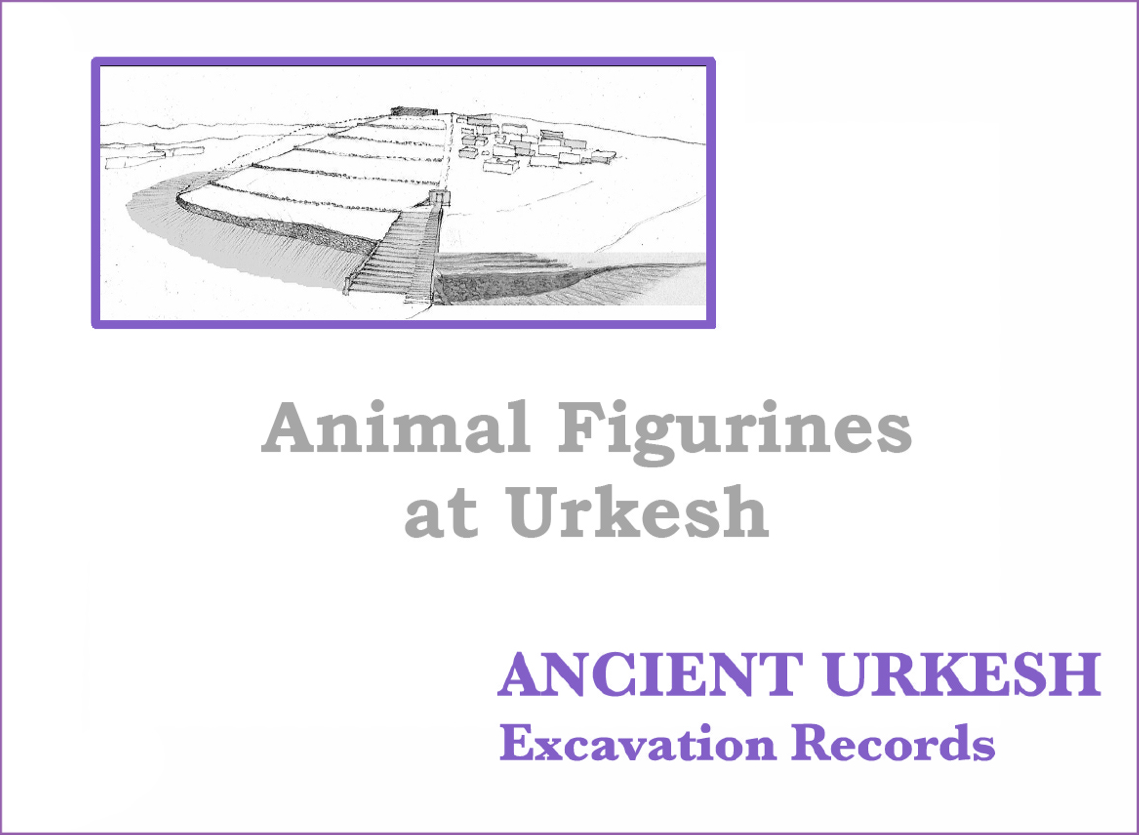
Animal Figurines at Urkesh
VC19
After a period of time spent in excavation, many artifacts are accumulated. They quite naturally fall into categories - like form with like form. It becomes possible to compare and to contrast artifacts which belong to the same category but which in fact differ in striking and idiosyncratic ways.
It became apparent that the animal figurines - quadrupeds/four-footed creatures for the most part - could be grouped in this manner - they were similar to each other. Interestingly, it became apparent rather early on that these categories corresponded to animal species - distinctions that could be isolated; and, after a time "read" in a manner similar to the manner in which we apprehend grammatical structure in a written narrative.
This process of comparison and study of similar detail is lengthy and it occurs over quite some period of time. It is only after a very long study that similarities begin to be palpable. It is these very similarities that form the basis of what we may call "a typology", how different body parts corresponded with one another. Ratio and proportion became determinant. There is an invariable relationship that defines each separate category. Research tests and verifies these distinctions.
We were led to categorize the exemplars as different genera - Bos, Ovis, Canis, Carnivora, Capra, and Equus. Within these larger categories, some differentiation was possible - it is clear, for example, that there were two different types of sheep - one that was raised for meat and one that was raised for wool. The dogs were clearly differentiated from the cats; and within the category Carnivora, there were two different body types, one rather leaner than the other.
The real revelation was in the category of the "horses" and their relatives. It became possible to differentiate amongst exemplars - there were asses, there were onagers, and there were exemplars of what we might call the "true horse".
This was nothing short of revolutionary. Never before had it been possible to read the archaeological record with such exactitude.
And it was this determination that brought researcher Juris Zarins, a noted field archaeologist, and Rick Hauser, the staff member responsible for the figurine corpus, together. Together, they have recently published a book on the domestication of equids in the third millennium B. C. E.
Graphic designer Claudia Wettstein was an important participant in the analysis of the figurine corpus. Her meticulous designs illustrate Hauser's book on the subject.
Interested readers are invited to test for themselves how the various categories relate, and to determine if ratio and proportion are indeed as important as the research seems to show.
In fact, the methodology is in use at various sites throughout the Middle East. It is hoped that other researchers will adopt the approach.
What is most important about the methodology is that it is precise and verifiable. It is not based on "how an animal looks", but rather on the precise relationship of body part to body part.
Claudia Wettstein